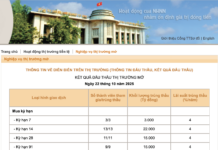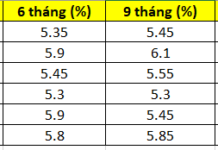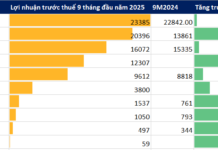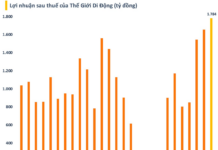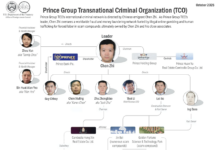
Hanoi People’s Council Passes Socio-Economic Development Plan for 2025 – Photo: VGP/GH
|
The Resolution on the Socio-Economic Development Plan for 2025 emphasizes the need to thoroughly grasp the spirit of General Secretary To Lam’s guidance on embracing a “new era, an era of Vietnam’s rise” in both thought and action.
It also calls for effective implementation of the amended Law on the Capital; Hanoi Capital Planning for the 2021-2030 period, with a vision towards 2050, and adjustments to the Hanoi Capital Master Plan until 2045, with a vision towards 2065. Preparations are underway for mechanisms and policies to accelerate development for the 2026-2030 period, with a focus on building socio-economic development plans, public investment plans, and industry-specific programs aligned with a “new vision, new global thinking, and Hanoi’s actions.”
Additionally, there is a determination to successfully achieve the goals, targets, and tasks set out in the Socio-Economic Development Plan for the 2021-2025 period. This includes continuing administrative reforms, streamlining the organization for efficiency and effectiveness, enhancing discipline and accountability of leaders, and vigorously implementing anti-corruption measures. Emphasis is also placed on developing science and technology, fostering innovation, and executing three key transitions (digital transformation, green transformation, and energy transformation).
Hanoi is committed to building synchronous and modern infrastructure with high connectivity, investing in digital infrastructure to lay the foundation for digital government, digital economy, digital society, and smart cities. Cultural development and enhancing human resources quality are also priorities. Ensuring social welfare and improving people’s lives, along with local defense and security, are crucial. Effectiveness in foreign affairs is another key aspect, with a continued focus on the five themes of “discipline, responsibility, action, creativity, and development.”
Moreover, 25 key socio-economic development targets have been approved, including: a GRDP increase of 6.5% or higher, GRDP per capita of 172.4 million VND or more, a 10.5% or higher increase in realized investment capital, a 5% or higher increase in export turnover, keeping the consumer price index below 4.5%, and maintaining zero poor households by the end of 2025…
Regarding key tasks and solutions, the Resolution emphasizes ensuring major balances, controlling inflation, and promoting economic growth. It also involves restructuring economic sectors in tandem with innovation-driven growth models, local governance innovation linked to digital transformation, and building a streamlined and efficient government apparatus. Hanoi aims to improve its rankings in the PCI, PAPI, PARIndex, and SIPAS indices. Comprehensive development is prioritized in the fields of culture, education, and healthcare, along with digital infrastructure and technology for a smart city.
Additionally, the city is committed to effectively implementing social security and welfare policies to enhance the material and spiritual lives of its citizens. Strict management and development of urban infrastructure are crucial, along with the implementation of approved planning schemes.
Hanoi’s 25 Socio-Economic Development Targets for 2025
|
1. GRDP growth rate: 6.5%. 2. GRDP per capita: 172.4 million VND. 3. Realized investment capital growth rate: 10.5%. 4. Export turnover growth rate: 5%. 5. Consumer Price Index: below 4.5%. 6. Reduction in the proportion of third or higher-order births compared to the previous year: 0.15%. 7. Reduction in the proportion of under-5 children suffering from mild malnutrition compared to the previous year: 0.1%. 8. Percentage of communes/wards/towns meeting national health standards: 100%. 9. Health insurance coverage rate: 95.5%. 10. Mandatory social insurance participation rate among employees in the working-age labor force: 47.5%. 11. Voluntary social insurance participation rate among employees in the working-age labor force: 3.5%. 12. Unemployment insurance participation rate among employees in the working-age labor force: 45%. 13. Reduction in the number of poor households compared to the beginning of the year: Maintain zero poor households. 14. Unemployment rate in urban areas: below 4%. 15. Proportion of trained laborers (currently working) in the total labor force: 75%; Proportion of laborers with qualifications or certificates: 55%. 16. Proportion of public schools meeting national standards: 80%; Number of newly recognized (first-time) public schools meeting national standards: 117 schools; Number of re-recognized public schools meeting national standards: 426 schools. 17. Proportion of households recognized and maintaining the title of “Cultural Family”: 88%. 18. Proportion of villages recognized and maintaining the title of “Cultural Village”: 65%. 19. Proportion of residential groups recognized and maintaining the title of “Cultural Residential Group”: 75% 20. Total number and area of social housing completed in the year: (1) Total number of social housing units completed: 4,670 units; (2) Total area of social housing completed: 264,000 sq. m. 21. Number of communes meeting advanced new-style rural standards: 35 communes; Number of communes meeting new-style rural model standards: 29 communes. 22. Proportion of households with access to clean water: 100% in urban areas and 100% in rural areas. 23. Proportion of household solid waste collected and transported on the same day: 100% in urban areas and 95-100% in rural areas. 24. Environmental treatment: (i) Proportion of new industrial clusters with wastewater treatment stations meeting national technical regulations: 100%; For existing industrial clusters and craft villages: 100%. (ii) Proportion of hazardous waste treated: 100%. (iii) Proportion of hazardous medical waste treated according to national technical regulations on the environment: 100%; (iv) Proportion of treated urban wastewater: 50-55%. 25. Proportion of public transport passengers: 20%. |
‘Breaking’: Ministry Merger Proposal; Eye-Popping Lunar New Year Bonuses Revealed
Supplementing the estimated reform salary cost; details of the plan to organize the apparatus of the Ministry of Finance, the Ministry of Planning and Investment, and the Ministry of Industry and Trade; FDI enterprises defaulting on billions of dong in taxes and leaving the country; enterprises in Binh Duong province offering the highest Tet bonus of up to nearly 400 million VND/person… were notable information last week.
The Nearest Airport is Just 10km Away, This Locale is on the Verge of Becoming a City
Over 6 trillion VND is expected to be invested in the development of technical infrastructure and the renovation and beautification of urban areas.






